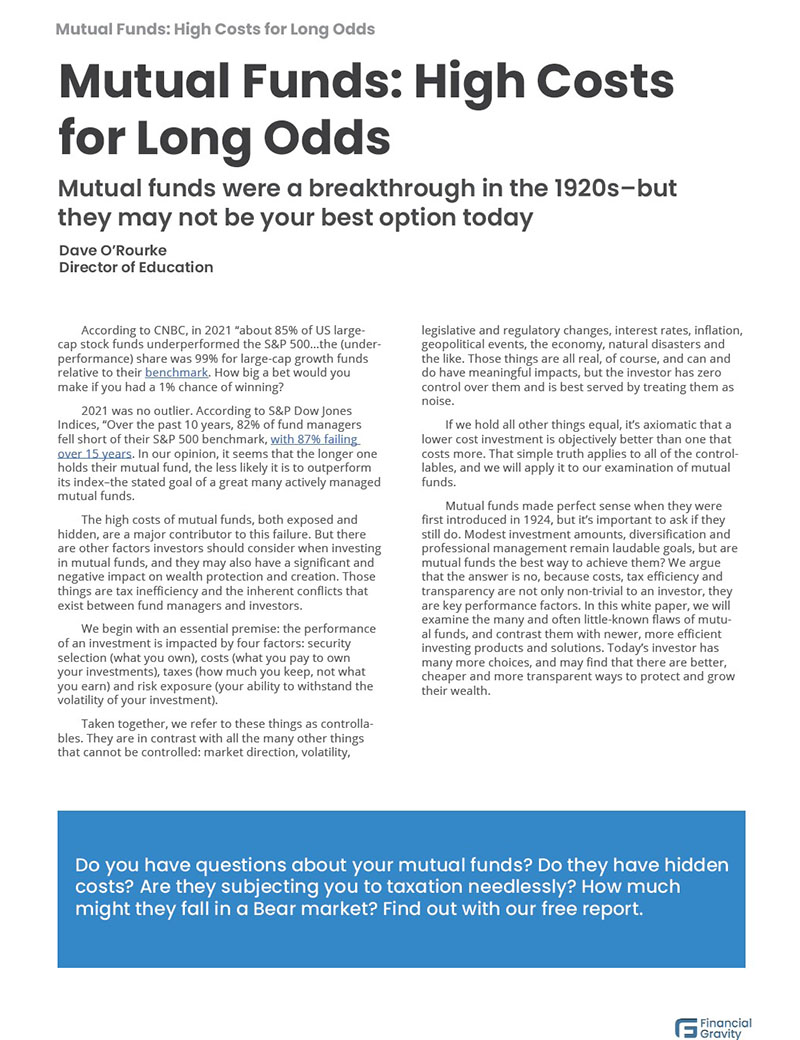Are Stocks a Good Inflation Hedge?
After a four-decade respite from the headlines, inflation came roaring back over the past several years, reducing the purchasing power of $1 by 25% since 2020 and making life difficult for many millions of Americans. While that loss of purchasing power hurts, investors can take some solace from their stock portfolio. This blog is intended to help you understand how inflation can affect your retirement account.
Most people want to know if inflation is good for stocks or bad for stocks, but it’s not that simple. Inflation, a general and sustained period of rising prices, has an impact on the performance of financial assets, particularly on stocks, but it’s a complex dynamic with many variables.
Inflation can wreak havoc with corporate profits, and it usually leads to higher interest rates, which themselves put pressure on balance sheets. Inflation can change patterns in consumer spending, notably on luxury and discretionary goods, and of course, it can have a psychological impact on investor sentiment.
Any and all of those things can affect stock prices. Let’s look at the correlation between stocks and inflation and look to history for some insight.
Higher Input Costs Lead to Higher Prices
Inflation is generally no fun for chief financial officers and businesses in general. As the cost of inputs rise, things like labor and raw materials, the costs of goods sold rise, thereby squeezing profits. If the company can pass along those costs in the form of higher retail prices, the margins can be protected, but when consumers are under inflation stress, they cut back or otherwise put pressure on company revenues. The result can be lower corporate earnings, which are a key measure of stock valuations. Most of the time, lower earnings drive stock prices down.
Our economy is made up of many different sectors, like energy, finance, health care, and utilities. Companies that traditionally operate with thin margins, like grocery stores, can have a harder time dealing with higher costs. Tech firms and healthcare companies tend to have either higher margins or inelastic demand and can generally cope with inflation more easily. You may see wide differences in performance across industries. Producers, construction, and food and lodging have felt the pressure in this current cycle.
The Cost of Capital is a Major Input
Anyone looking to buy a home over the past several years can speak to the impact of inflation on interest rates. Raising rates is the principal tool of the Fed to combat inflation, its mandate. The cost of home mortgages has risen dramatically, pricing many people who would have otherwise qualified just a few years ago out of the market. Raising rates have two other impacts: they’ve slowed the building of new homes, and they’ve made current owners with low interest rate mortgages reluctant to sell. The result has been a double whammy: rising home prices and rising mortgage rates.
Stock valuations are often based on the net present value of a future stream of profits or cash flows, so when interest rates rise, the value of those future streams falls. This puts downward pressure on valuations, particularly of growth stocks.
If you’re in the business of making cars or running an airline, you would expect inflation to affect the demand for your products or services. Discretionary spending tends to be the first thing consumers cut back on. However, like real estate, the prices of cars and trucks have hardly gone on sale. The average cost of a new car is now over $48,000, up 29% since March of 2020. And according to CNBC, the price of an airline ticket rose 25% in the last year, its biggest one-year rise since the Fed began tracking it.
As we’ve noted in previous editions, the stock market climbs a wall of worry. Worry is another term for investor sentiment, and inflation can lead to volatility as investors move to safety. Investor sentiment is one of the most difficult things to predict, and obviously, it’s impossible to control.
Control the Controllable
This recent cycle of high inflation has been paired with particularly good stock performance, but that’s not always been the case. In the Carter era inflation of the ‘70s, the U.S. experienced simultaneously high inflation and a weak economy. Those were dark days for the U.S. as purchasing power and asset prices fell.
Over the long haul, stocks have been an inflation hedge. According to Thrivent, since 1957, large-cap stocks have gained 10.7% per year on average, while U.S. inflation since 1914 has averaged 3.28% per year. This track record is robust enough to give investors confidence that their portfolio is a good place to store and grow their wealth over time.
Indications are that inflation may be out of the news fairly soon. The Fed cut rates at its last meeting and has signaled that more cuts lie ahead. This is a far gentler but still valid repeat of the pattern following the Global Financial Crisis. During that period of low inflation and robust growth, the S&P 500 went on a historic run of nearly 11 years, and quadrupled during that period.
We can’t predict when inflation will strike, how long it will last, or what impact it may have on the economy or the markets. While we can make a reasonable guess that high inflation will lead to higher interest rates, we can predict what that will do to profits or prices. In the end, we can’t predict anything reliably or control anything but our own behavior.
Many people may have thought that this recent spike in the CPI would be bad for stock prices, or home prices, or automobile or airline companies, and they could have made a compelling argument. The market, however, was busy climbing its wall and delivering a very nice return for investors.








